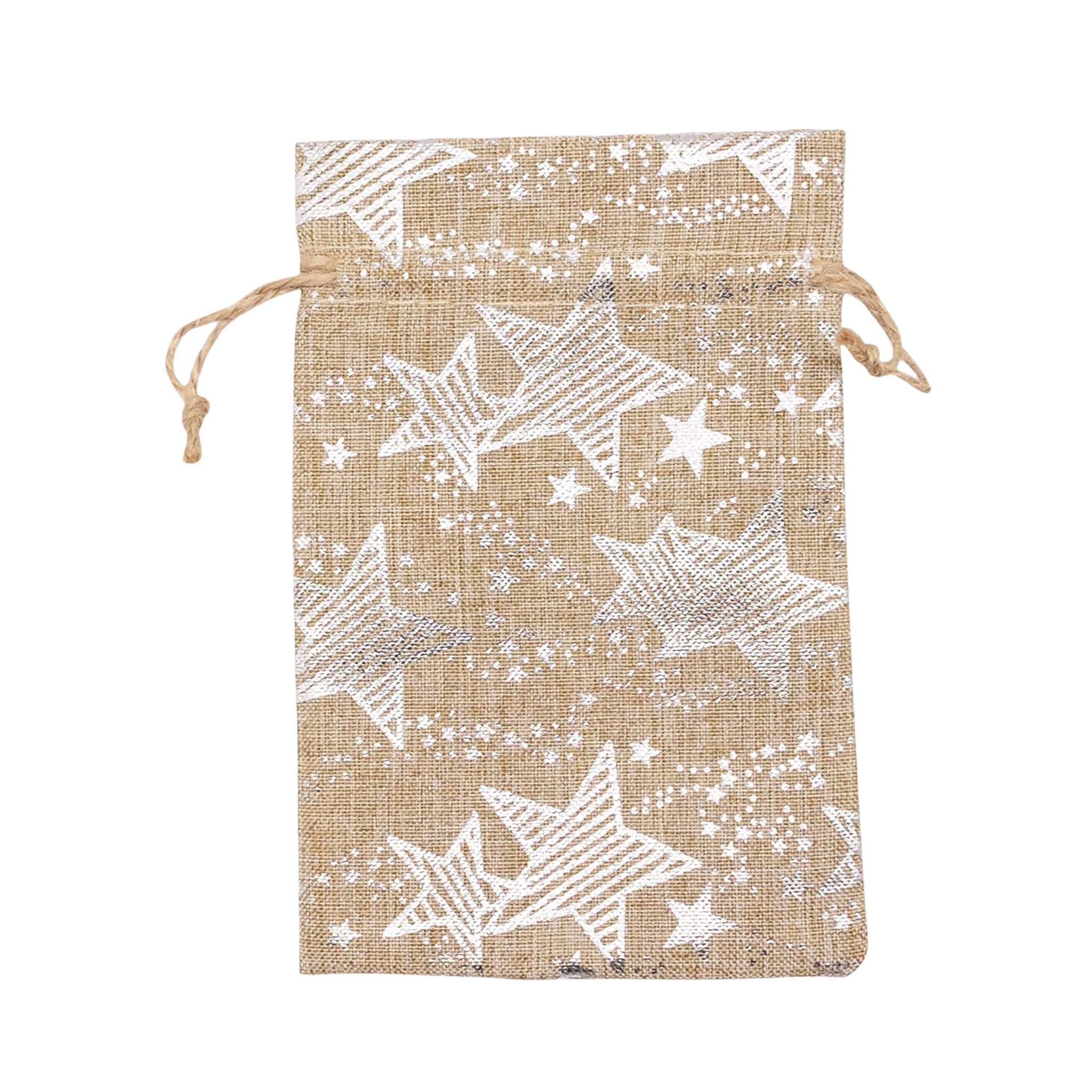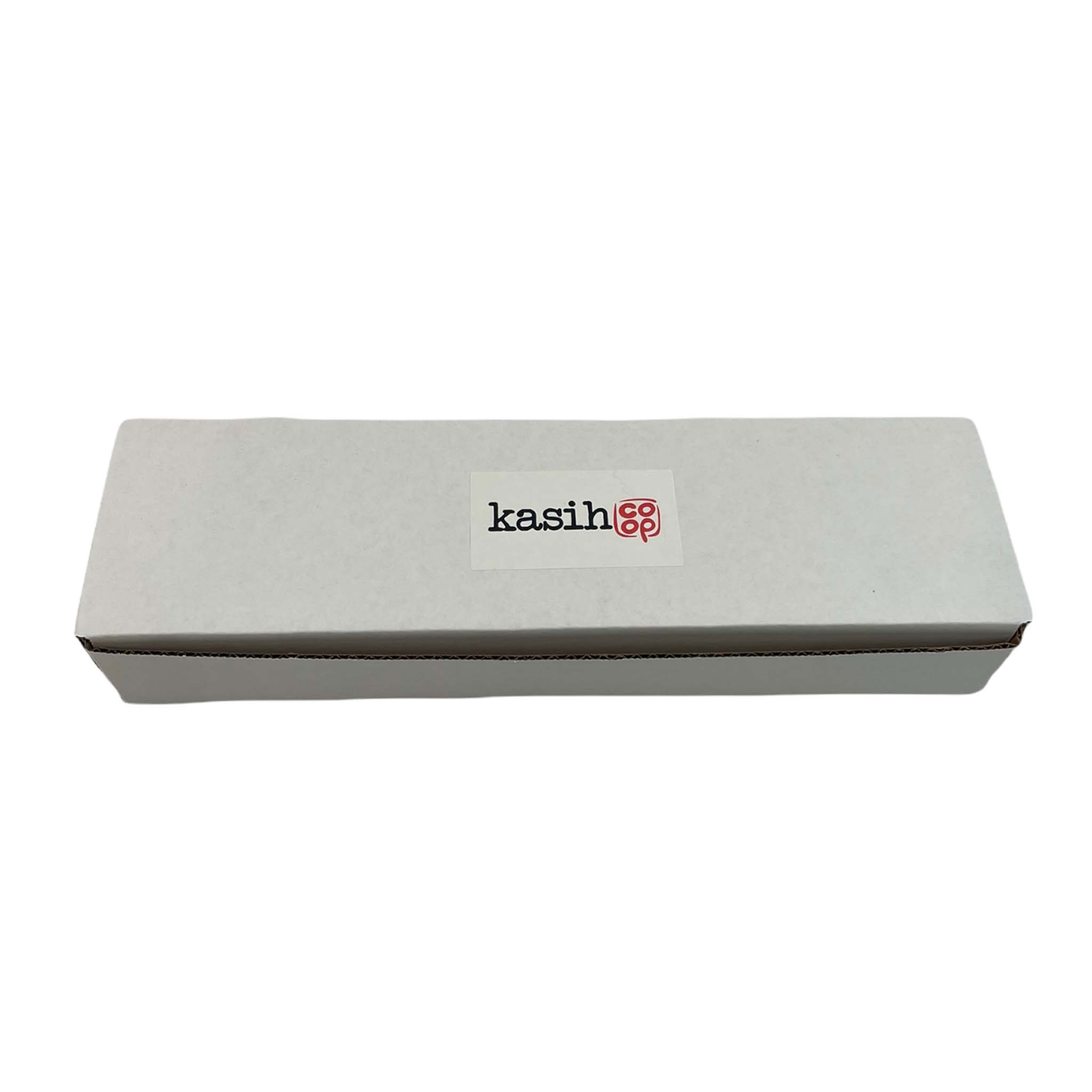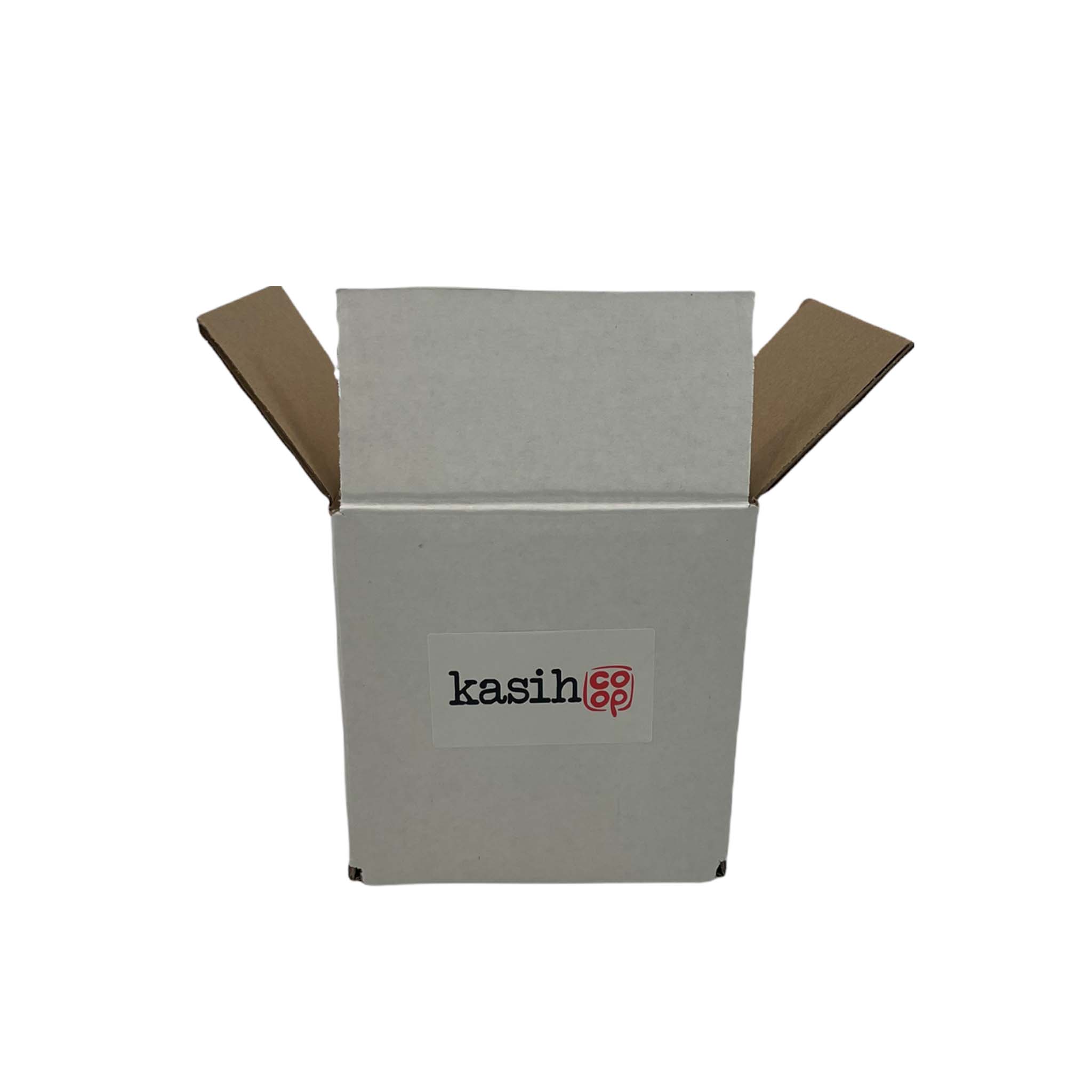Hand-drawn batik or "Batik Tulis" is the oldest method of batik wax and dye technique that has been around since the 14th century. We are excited to share the process of Batik Tulis to you.
Hand-drawn Batik Process:
- Drawing the pattern with pencil onto the white fabric or "Nyoret"

- Draw over the penciled pattern using Canting tool filled with hot wax or "Nglowongi"
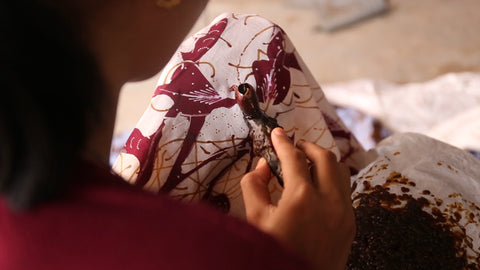
This process is to apply hot wax using canting tool to follow the penciled pattern on the white fabric. The hot wax will cover the pattern and keep the pattern to still be white in color even after the fabric is dyed.
- Dye-ing the fabric with colors
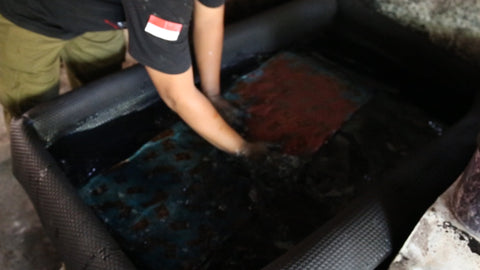
Celup: dipping the fabric in dye
After the fabric has the dried wax on it, it is time to dye the fabric. There are two techniques of coloring the fabric. The first is is to dip the fabric in dye so that all fabric has the same color, this technique is called "Celup". The second is to have multiple artisans color the fabric with dyes using brush, this technique is called "Colet". Colet is typically done if the final batik fabric design has many colors.

Colet: applying the wax using brush. Source: beritadaerah.co.id
- Removing the hot wax by boiling the fabric in hot water or "Melorot"

Once the fabric has been dyed, the final process is to remove the hot wax by boiling it off with hot water. The hot water will remove the wax from the fabric and thus the pattern where the hot wax was on would stay white or a color that the hot wax was applied on.
There you have the tedious process of making batik tulis or hand-drawn batik. At Kasih Co-op, we are so excited to launch four new patterns of hand-drawn batik tulis from Lasem in Central Java. Batik Lasem is known for its colorful pattern and it has various Indonesian culture influencing its patterns.
Featured Batik Face Masks

